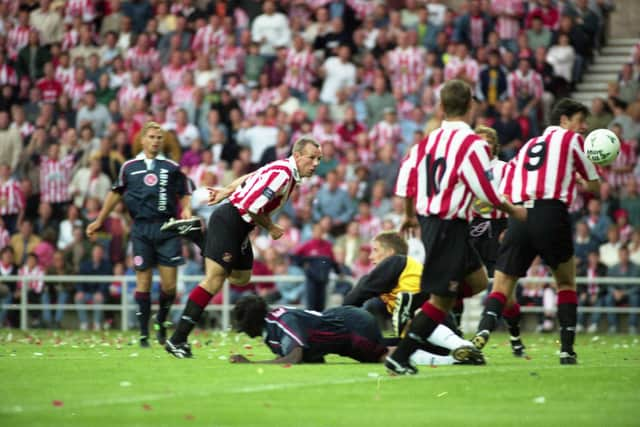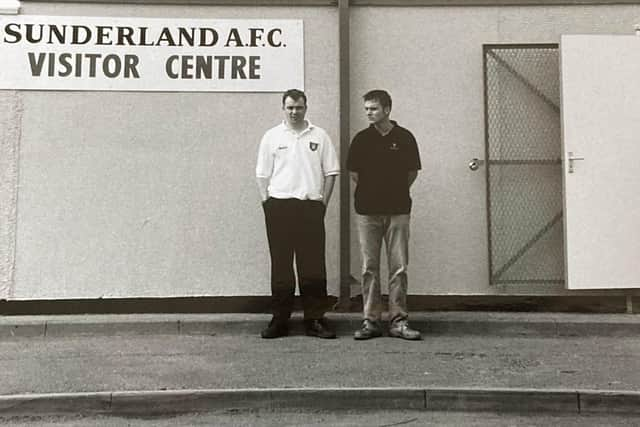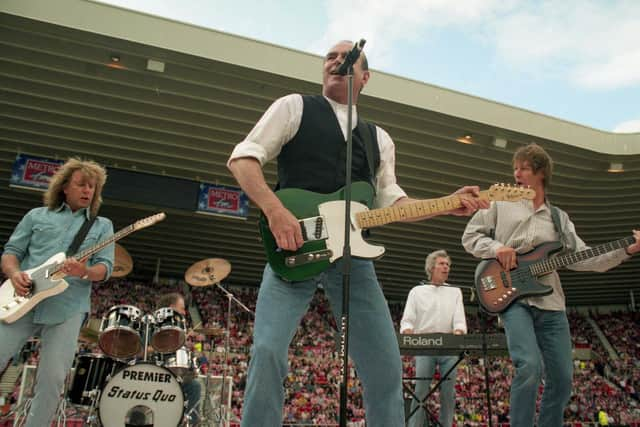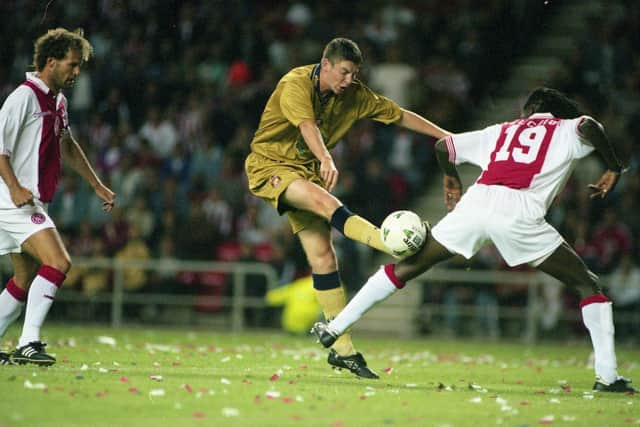Sinking rumours, 'The Hut' and counting down to Ajax: An insider's story on the opening of Sunderland's Stadium of Light in 1997
and live on Freeview channel 276
Years of waiting were over and Sunderland AFC were about to play the first game in their new world class stadium. The anticipation could have been chopped up and served with gravy.
The fixture was a showpiece friendly against Ajax, one of Europe’s greatest clubs who fielded household names including Laudrup, Van der Sar and the de Boer twins. Yet in truth the excitement would have barely abated had the opposition been Witherwack.
Advertisement
Hide AdAdvertisement
Hide AdJoyous fans embraced each other as soon as they entered the arena; and not because of the match itself. It was all about the stadium – and the people who would use it.


History
Sunderland had just left Roker Park after 99 years. Roker was all anyone connected with SAFC had ever known. It had been a fine ground and was a venue for the 1966 World Cup.
However, by 1997 it had fallen into what unimaginative journalists call “Dickensian squalor”; vividly evidenced by a visit to the horrific lavatories of the Roker End. That and the Taylor Report meant it had to go.
After years of wasted time on a proposed move to Washington, and some extremely fanciful notions that Roker Park could be redeveloped, came some luck. Luck for the club that is; not for miners. In November 1993 Wearmouth Colliery closed after 158 years.


Advertisement
Hide AdAdvertisement
Hide AdThe Tyne and Wear Development Corporation had a duty to reclaim the colliery land, regardless of which purpose the land would then serve. Sunderland would, handily and unlike other clubs, be able to move closer to the city centre.
‘The Hut’ and the SAFC’s big signing
To keep the public posted on the progress of the development, the club opened a visitor centre on July 9, 1996. This was a temporary cabin offering a view of what was at that point, literally, just a hole in the ground (the lower tier would be sunk below street level).
The centre, affectionately known as ‘The Hut’, was officially opened by the great Len Shackleton behind what is now the new Roker End and I was there, lurking. I would lurk for five years.


I had been offered a job as information officer by Lesley Coates, later Callaghan. I took the job seriously and knew about the stadium’s schedule, contractors, sub-contractors, dimensions, number of toilets, concrete tonnage… you name it.
Advertisement
Hide AdAdvertisement
Hide AdYet it soon became apparent that exhaustive learning was no match for baseless opinion and wild conclusions. And before social media too.
Rumours
I would politely point out that my information was derived from official drawings and documents, plus discussions with the project manager, construction manager, construction experts, local authority, consultants, architects and the club’s top brass.


This was often insufficient to stem a tide of complete banana oil from someone who had received “information” from a taxi driver, or the next-door-neighbour of their cousin who had spoken to a bloke who had delivered some timber… etc.
Interestingly the fairy tales were never positive. The piffle always relayed impending doom about strikes, material shortages, financial disaster and so on.
Advertisement
Hide AdAdvertisement
Hide AdThe most persistent codswallop was that the pitch was sinking into the mine (even though the mine was under the North Sea and the three pit shafts were not beneath the stadium either).
Absurdly fake news became so prevalent that the Echo gave in and sent a reporter to me to show him the pitch; although the paper knew that the story was – that there was no story.
The reporter, whose name I don’t remember, sarcastically concluded that the entire pitch must have uniformly and completely sunk in one go; because it looked like a billiard table.
The lead-up
In September 1996 the first steel was erected in what became the East Stand and visitors to The Hut became increasingly excited, staring happily, oohing and aahing at the girders. I should add that only male visitors displayed such emotion at the mere glimpse of carbon steel.
Advertisement
Hide AdAdvertisement
Hide AdFrom then construction accelerated. I changed jobs to work in the site office assisting Dave Nicholson, the project manager then stadium manager when the stadium opened.
By July 1997 it was ceaselessly frantic on site. Rumours now shifted to “It’ll never open on time.” There really was no shifting people from this view. This was Sunderland after all, where everything goes wrong.
Nevertheless, I could see why they thought that. In the days before Ajax it did seem impossible to the layman that the game could proceed. But Mr Nicholson told me it would and I placed great faith in him. Correctly as it turned out. Behind the apparent pandemonium, he knew what he was doing.
At last…
The stadium was not complete on July 30, 1997. But enough had been done for the game to be played entirely safely.
Advertisement
Hide AdAdvertisement
Hide AdThere was much pageantry and entertainment on the night, although the besieged, problem-stricken ticket office staff were in no position to appreciate it. Status Quo arrived by helicopter and were warmly received; some tedious musical snobbery notwithstanding.
I recall the stadium announcer bellowing: “Let’s hear it for Quo! It’s Rick’s first gig since his quadruple bypass!” Ah, rock n’ roll.
Then came the rapturous piece of local history for which Wearsiders had been waiting years. The inaugural match at the Stadium of Light, which was itself… quite forgettable.
It was a nil-nil draw. Kevin Ball had a goal (wrongly) disallowed for a foul. This inadvertently provided an historical positive as it meant the stadium’s first goal came 16 days later in a “real” game against Manchester City. It would prove fitting that the scorer was Niall Quinn.
It was all a long time ago now. But, like any event that matters, the grand opening feels as though it happened yesterday.
And there still isn’t a better stadium within 250 miles of Sunderland.